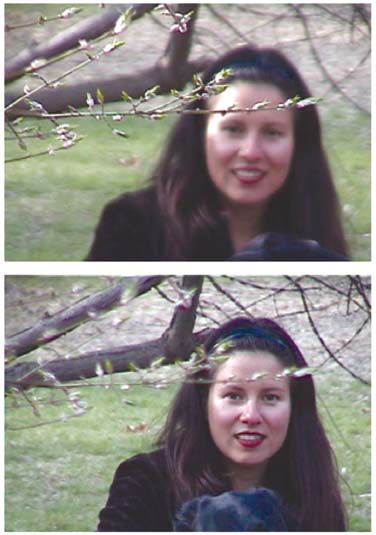Keep It in Focus
A camcorder is a camera, just like any other. If its lenses aren’t focused on the subject, you wind up with a blurry picture.
In theory, the autofocus feature of every DV camcorder takes care of this delicate task for you. You point the camera, it analyzes the image and adjusts its own lens mechanisms, and the picture comes out in sharp focus. But in practice, the autofocus mechanism isn’t foolproof. Camcorders assume that the subject of your filming is the closestobject; most of the time, that’s true. But now and then, your camcorder may focus on something in the foreground that isn’tthe intended subject. As a result, what you actually wanted to capture goes out of focus, as Figure 2-6 makes clear.

Figure 2-6. Figure 2-6: When you’re filming the school play, somebody’s head or hat may confuse the autofocus. When you’re filming scenery, a nearby branch may similarly fool it (top). The front bars of zoo cages are also notorious for ruining otherwise great shots of the animals inside them. The only solution is to use manual focus (bottom).
Another autofocus hazard is a solid or low-contrast background (such as a polar bear against a snowy background). The autofocus method relies on contrasting colors in the image. If you’re aiming the camcorder at, say, a white wall, you may witness the alarming phenomenon known as autofocus hunting, in which the camcorder rapidly ...
Get iMovie 6 & iDVD: The Missing Manual now with the O’Reilly learning platform.
O’Reilly members experience books, live events, courses curated by job role, and more from O’Reilly and nearly 200 top publishers.

